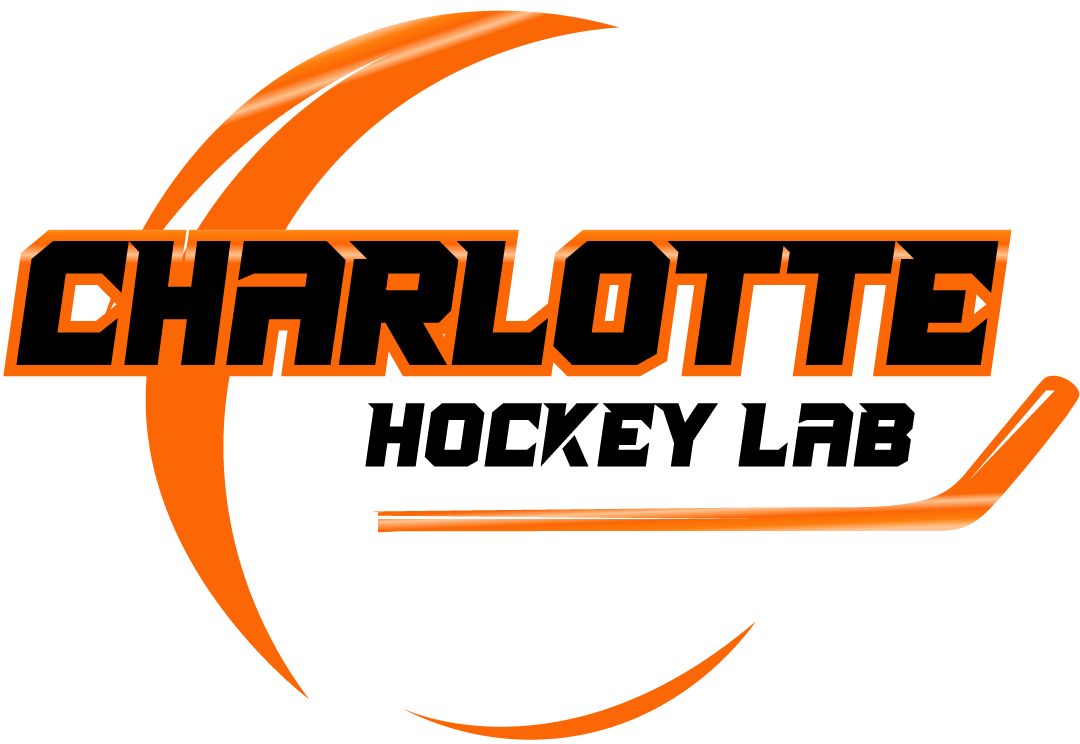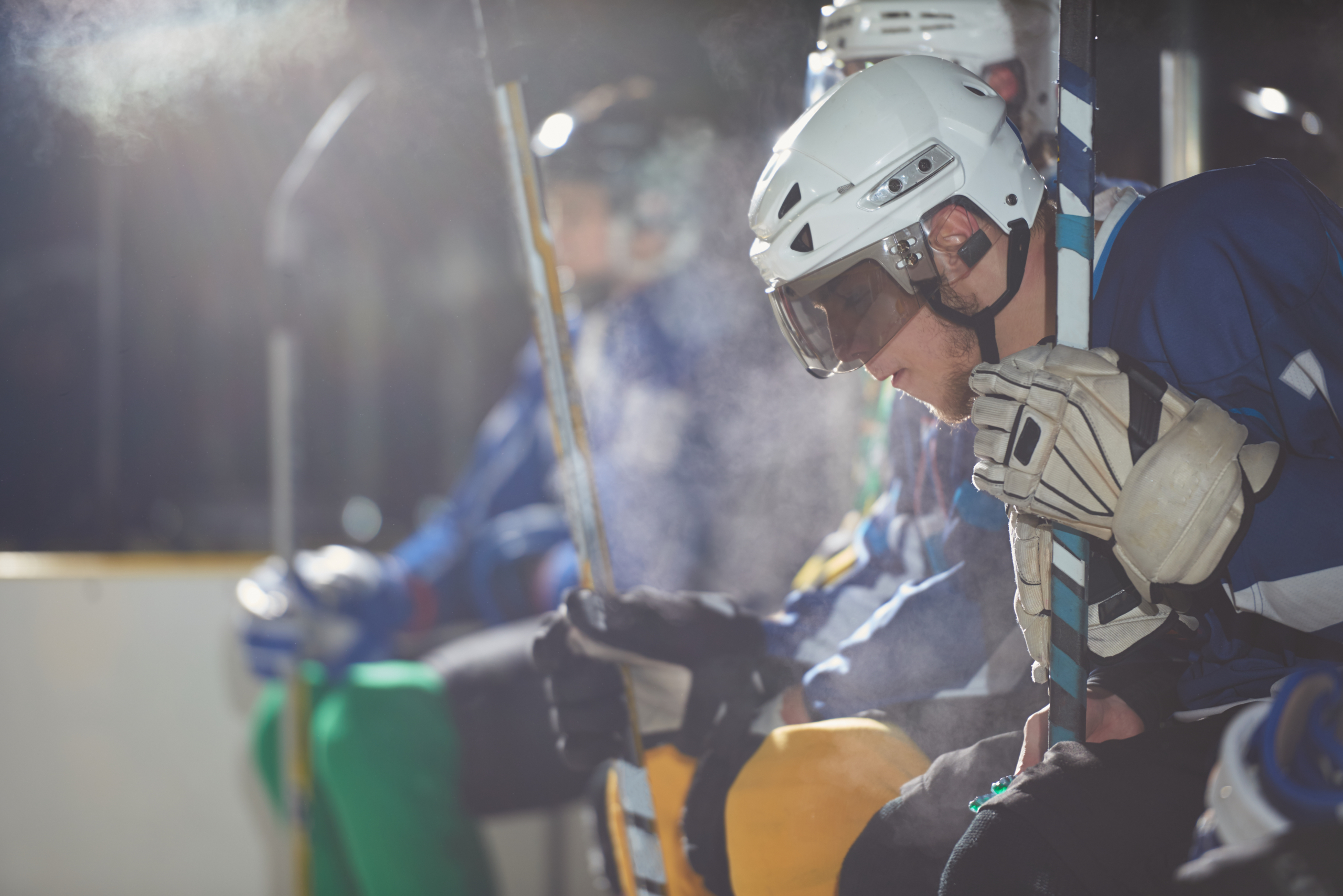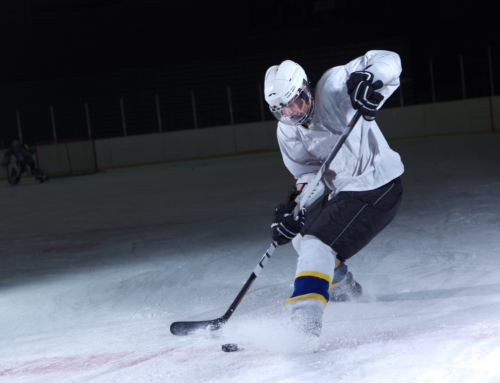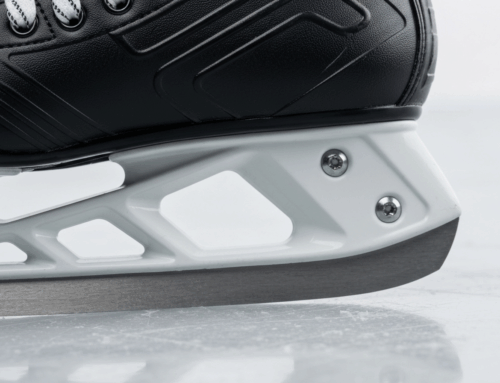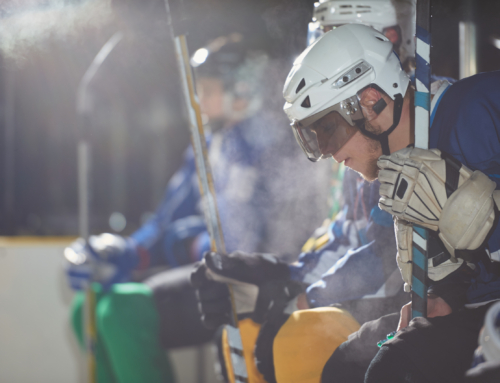Roadmap: Developing elite hockey players strategically
Laying the Groundwork for Elite Hockey Potential
Hockey is a sport that demands a unique blend of physical prowess, technical skill, mental fortitude, and strategic understanding. Aspiring to become an elite hockey player requires far more than just natural talent; it necessitates a deliberate, long-term approach focused on holistic development. Developing elite hockey players strategically involves building a strong foundation from the earliest stages, nurturing core skills, and integrating physical and mental conditioning into a comprehensive training plan. It’s about creating a pathway that systematically addresses all facets of a player’s growth, not just their on-ice performance in games.
The journey begins with identifying potential and fostering a genuine passion for the game. Young players need an environment where they can fall in love with hockey, focusing on fun and skill acquisition before the pressures of competition become paramount. Laying this groundwork means providing access to quality coaching, sufficient ice time for practice and free play, and opportunities to develop fundamental movements and coordination. It’s in these initial years that critical motor skills are developed, laying the essential physical foundation upon which advanced hockey skills will be built. Without this solid base, players may hit a ceiling in their development later on, regardless of how much tactical knowledge they gain.
Furthermore, establishing good habits early, both on and off the ice, is crucial. This includes teaching players the importance of listening to coaches, respecting teammates and opponents, and understanding that effort and perseverance are key. Developing elite hockey players strategically recognizes that character development is intertwined with athletic development. Players who learn discipline and resilience when they are young are better equipped to handle the inevitable challenges, setbacks, and plateaus they will face as they strive for elite status.
Part of this foundational stage also involves exposure to diverse athletic activities. Specializing too early can hinder overall athletic development and potentially lead to burnout or overuse injuries. Encouraging participation in other sports builds different muscle groups, enhances general athleticism, and provides a mental break from the demands of hockey. This multi-sport approach contributes to a more well-rounded athlete, which ultimately benefits their hockey performance in the long run. It’s a strategic choice that prioritizes long-term growth over short-term, sport-specific gains.
Mastering Fundamental Skills: The Athlete’s Core
At the heart of developing elite hockey players strategically is the absolute mastery of fundamental skills. Skating, puck handling, shooting, and passing are the building blocks of the game. While advanced tactics and physical conditioning are vital, they cannot compensate for deficiencies in these core areas. An elite player makes the fundamentals look effortless, allowing them to execute complex plays at high speed under pressure.
- Skating: This is arguably the most critical skill in modern hockey. Elite players possess exceptional speed, agility, balance, and edge control. Training focuses on stride mechanics, explosive starts, quick stops, sharp turns, and powerful crossovers. Developing elite hockey players strategically means dedicating significant time to edge work drills and balance exercises. Mastering skating allows players to get to pucks quicker, create space, evade defenders, and maintain optimal positioning.
- Puck Handling: Control and creativity with the puck are essential. Drills should focus on soft hands, control in tight spaces, handling the puck at high speeds, and keeping your head up to read the play. Good puck handling allows players to maintain possession, make plays under pressure, and create scoring chances. Effective stickhandling drills for all levels are fundamental.
- Shooting: Whether it’s a powerful slap shot, a quick wrist shot, or an accurate backhand, being able to put the puck on net effectively is paramount. Training includes developing power, accuracy, and the ability to shoot from various angles and stances. Techniques to enhance accuracy and power in wrist shots and perfecting the slap shot are key areas of focus.
- Passing: Crisp, accurate passing is vital for team success. Players need to be able to make and receive passes on their forehand and backhand, in stride, and under pressure. Developing elite hockey players strategically involves practicing various passes, including saucer passes for accuracy over obstacles, and ensuring timing is sharp.
Developing these skills is not a one-time achievement but a continuous process. Even at the elite level, players spend considerable time refining their fundamentals. The complexity increases as players advance; they must execute these skills with greater speed, precision, and awareness within increasingly demanding game situations. This phase requires repetition, expert coaching feedback, and a commitment to deliberate practice. Using resources like the Guide to Using Hockey Canada Ultimate Skill Resource can provide structured approaches to skill development.
Off-ice practice can significantly supplement on-ice skill development. Drills for practicing 36 essential hockey skills with simple setup at home can help players build muscle memory and improve hand-eye coordination without needing ice time. Integrating dryland training that mimics on-ice movements further reinforces the connection between off-ice work and on-ice performance. This dual approach ensures that players are constantly working on skill refinement, maximizing their development potential.
The Science of Development: Physical and Mental Conditioning
Modern hockey is faster, stronger, and more demanding than ever before. Therefore, physical and mental conditioning are not supplementary but integral components of developing elite hockey players strategically. A player might have exceptional skills, but without the physical capacity to execute them consistently over three periods or the mental toughness to perform under pressure, they will fall short of their potential.
Physical Conditioning: This encompasses strength, power, speed, agility, endurance, flexibility, and injury prevention. A well-designed dryland training program is essential. Strength training for hockey players should focus on functional movements that translate to the ice, such as lower body strength for explosive skating and upper body strength for puck battles and shooting. Plyometric drills for explosiveness are crucial for developing the quick bursts of speed and power needed in the game. Cardiovascular conditioning, often through HIIT workouts mimicking hockey’s stop-start demands, builds the endurance required to maintain high intensity throughout a game.
Flexibility and mobility routines, including hockey-specific yoga, improve range of motion, which is vital for a powerful stride and preventing injuries. Core stability workouts are fundamental for balance, power transfer, and injury prevention. Nutrition tips for hockey players and understanding recovery techniques post-training are equally important, providing the body with the fuel and rest needed to adapt and improve. Preventing groin strains through dynamic warm-ups and understanding concussion protocols are non-negotiable aspects of physical development.
Mental Conditioning: The psychological aspect of hockey is becoming increasingly recognized as a differentiator at the elite level. Mental toughness, focus, concentration, and the ability to handle pressure are critical. Visualization techniques can help players prepare for high-pressure moments and mentally rehearse game scenarios. Overcoming slumps requires mental drills and mindset shifts to regain confidence. Learning to deal with defeat by learning from losses is essential for long-term growth.
Building team chemistry and effective communication on ice are also part of mental conditioning, fostering a supportive environment where players can thrive. Pre-game routines help players get into the right mindset and manage anxiety. Developing elite hockey players strategically means investing time and resources into the mental side of the game, teaching players how to stay calm under stress and maintain focus amidst chaos. Goal setting, both personal and team-oriented, provides direction and motivation.
Developing Elite Hockey Players Strategically: A Long-Term Vision
The path to becoming an elite hockey player is rarely linear. It involves highs and lows, periods of rapid growth and frustrating plateaus. Adopting a long-term strategic vision is crucial for navigating this journey successfully. This vision acknowledges that development is an ongoing process that spans many years, from youth hockey through junior leagues and potentially into professional ranks. It’s not about maximizing performance at the earliest possible age, but about building a sustainable trajectory of improvement.
A strategic approach considers age-appropriate training loads, skill development phasing, and the psychological readiness of the player. For instance, while fundamental skills are introduced early, complex tactical concepts and intense physical training are gradually layered in as the player matures. Avoiding burnout is a key consideration; young players need time away from the rink to prevent physical and mental fatigue. Balancing hockey and school is also a critical part of this long-term vision, ensuring players develop as well-rounded individuals.
Developing elite hockey players strategically also involves understanding the different stages of player development. Each stage has specific goals and focuses, from basic movement patterns in the initiation phase to high-performance training in the elite phase. Coaches, parents, and players must be aligned on these objectives and understand that progress happens at different rates for different individuals. Patience is a virtue in this process. Comparing young players to peers who develop physically earlier can be detrimental; the focus should remain on individual progress against their own potential.
Furthermore, the long-term vision includes planning for transitions between levels of play. Moving from minor hockey to junior, or junior to college or professional hockey, involves significant adjustments in pace, physicality, and tactical complexity. A strategic plan helps players prepare for these transitions, addressing not only the on-ice demands but also the off-ice challenges such as relocating, managing academics (if applicable), and integrating into a new team environment. Understanding the how to start implementing modern strategic hockey training methodologies is key to building this sustainable pathway.
Tailoring Training: Individual Needs vs. Team Goals
While team systems and collective goals are paramount in hockey, developing elite hockey players strategically requires a careful balance between team objectives and individual player needs. Every player is unique, possessing different strengths, weaknesses, learning styles, and physical attributes. A one-size-fits-all approach to training is unlikely to unlock a player’s full potential.
Individualized training plans are essential. These plans should begin with a thorough assessment of the player’s current skill level, physical capabilities, mental approach, and understanding of the game. Based on this assessment, specific goals and targeted training activities can be developed. For example, a defenseman who excels defensively but needs to improve their offensive game might focus on breakout passing for defensemen and offensive zone positioning. A forward with great speed but lacking shooting accuracy might spend extra time on shooting drills for accuracy.
Coaches play a crucial role in identifying these individual needs and tailoring practice plans accordingly. This doesn’t mean ignoring team practices, but rather incorporating opportunities within team settings or providing supplementary training outside of regular practice. For instance, after a team practice focused on defensive zone coverage, a coach might work with a few players on essential hockey defensemen gap control and angling techniques. Similarly, after power play drills, players might work on the art of the one-timer or zone entries.
However, individualized training must always be integrated with team goals and systems. Players need to understand how their individual skills contribute to the team’s overall strategy. Tailoring training should aim to make the player more effective within the team framework, not solely as an independent operator. This involves teaching players how to apply their enhanced individual skills within team concepts, such as forechecking systems or penalty kill tactics. The goal is to create players who are not only individually skilled but also highly effective team players, crucial for developing elite hockey players strategically.
Regular communication between players and coaches is vital for this tailored approach. Players should feel comfortable discussing their development goals and areas they want to improve. This collaborative approach empowers players and makes them active participants in their own development journey. Coaches can use this feedback to adjust training plans and ensure they are addressing the most pressing needs while still working towards collective success.
The Role of Coaches and Environment in Nurturing Talent
The quality of coaching and the overall environment are arguably the most significant factors outside of the player themselves in developing elite hockey players strategically. Coaches are not just instructors; they are mentors, motivators, and role models. A great coach possesses a deep understanding of the game, effective communication skills, the ability to teach and adapt to different learning styles, and a genuine interest in the well-being and long-term development of their players.
Effective coaching goes beyond running drills. It involves teaching players to read the play, developing anticipation skills, understanding team systems, and making smart decisions under pressure. Coaches must create a positive and challenging environment where players feel safe to make mistakes and learn from them. Constructive feedback is essential for growth, helping players understand what they need to improve and how to go about it. This requires coaches to be skilled observers, able to break down complex skills and tactics into manageable steps.
The coaching staff, encompassing head coaches, assistant coaches, skill coaches, and strength and conditioning coaches, must work cohesively to ensure a consistent message and integrated training plan. Special teams tactics for power plays and penalty kills require detailed coaching and practice. Coaches must also stay updated on the latest training methodologies and sports science principles, such as the evolution of modern strategic hockey player development.
Beyond the coaching staff, the overall environment created by the team, the organization, and even the parents plays a critical role. A positive team culture fosters camaraderie, mutual support, and healthy competition. Players feel comfortable challenging themselves and relying on their teammates. Parental support is also key, but it must be encouraging without pressuring. Parents should support the coach’s efforts and focus on their child’s effort and attitude, rather than solely on outcomes.
An elite development environment provides access to high-quality facilities, experienced support staff (like athletic therapists and sports psychologists), and opportunities for competitive play against strong opponents. Organizations that prioritize player development strategically invest in these resources. They understand that nurturing talent is a multi-faceted endeavor that requires a supportive ecosystem surrounding the player.
Progress Tracking and Adapting the Player’s Path
Developing elite hockey players strategically is an iterative process that requires continuous monitoring and adaptation. Simply following a generic training plan without tracking progress and making adjustments is inefficient and unlikely to yield optimal results. Effective progress tracking provides valuable insights into what’s working, what isn’t, and where the player is in relation to their development goals.
Progress can be tracked through various methods:
- On-ice Metrics: Tracking stats like goals, assists, +/- rating, faceoff win percentage, shot attempts, and possession metrics can provide objective data on performance. More advanced metrics might include zone entries, successful defensive zone exits (like those developed through specific drills), or effectiveness on special teams.
- Skill Testing: Periodically testing fundamental skills such as skating speed and agility, shooting accuracy and velocity, and puck control allows for a direct measure of improvement in these core areas.
- Physical Assessments: Regular strength and conditioning testing (e.g., vertical jump, sprint times, bench press, squat) tracks physical development and identifies areas needing more attention.
- Video Analysis: Analyzing game and practice footage helps players and coaches identify technical flaws, tactical errors, and areas for improvement in decision-making and reading the play.
- Coach and Player Feedback: Regular conversations between coaches and players provide qualitative feedback and help assess intangible aspects like hockey sense, compete level, and adaptability.
The data and insights gathered from progress tracking are used to adapt the player’s development path. If skill testing shows a plateau in shooting accuracy, the training plan might be adjusted to include more targeted shooting drills. If video analysis reveals poor gap control, the player might focus on essential hockey defensemen gap control and angling techniques. If physical assessments highlight a weakness in explosive power, plyometric drills for hockey can be increased.
This adaptive approach ensures that training remains relevant, challenging, and targeted to the player’s evolving needs. It allows for flexibility in the plan, acknowledging that development doesn’t always happen predictably. It also empowers players by showing them concrete evidence of their progress and highlighting the direct impact of their hard work. Developing elite hockey players strategically is about being responsive and proactive based on evidence.
Furthermore, tracking goes beyond just individual performance. Coaches can track the implementation of team strategies and how well players are executing them. This feedback loop allows coaches to refine systems and ensure the team is progressing towards its collective goals while simultaneously fostering individual growth. Tools and resources for tracking player development are becoming increasingly sophisticated, offering deeper insights into performance.
From Prospect to Pro: Sustaining Growth and Performance
Reaching the professional level is a significant achievement, but the journey doesn’t end there. Sustaining growth and performance is the final, continuous stage in developing elite hockey players strategically. The demands of professional hockey are immense, requiring players to constantly adapt, improve, and maintain peak physical and mental condition.
At the professional level, the focus shifts slightly but the principles remain the same. Players continue to refine fundamental skills, constantly seeking marginal gains. They dedicate significant time to advanced physical conditioning, recovery techniques, and nutrition to withstand the rigors of a long season. Mental preparation becomes even more critical, dealing with pressure, expectations, and the competitive environment.
Professional players often work with specialized coaches and trainers to focus on specific areas of their game or physical preparation. This might involve working with a skating coach to improve stride efficiency, a shooting coach to refine technique, or a sports psychologist to enhance mental resilience. The individualized approach continues, but often with greater resources and expertise available.
Understanding and adapting to different team systems and coaching philosophies is a vital skill for professional longevity. Players must be versatile and able to integrate their individual strengths into various tactical frameworks. Reading the play at an exceptionally high level and making quick, intelligent decisions under immense pressure are hallmarks of elite professional players.
Injury prevention and management become even more critical. The wear and tear of a professional season require meticulous attention to recovery, flexibility, and strength to minimize the risk of injury and expedite return to play if an injury occurs. Maintaining peak physical condition throughout the season is a constant challenge.
Finally, sustaining growth at the professional level requires a commitment to continuous learning. The game evolves, strategies change, and new training methods emerge. Elite players remain students of the game, always looking for ways to improve and adapt. This could involve studying video of opponents, analyzing their own performance metrics in detail, or seeking out new training techniques. The strategic mindset that guided their development to this point remains essential for maintaining their place at the top.
In conclusion, developing elite hockey players strategically is a complex, multi-year process that encompasses skill mastery, physical and mental conditioning, individualized training, effective coaching, a supportive environment, and continuous adaptation based on progress tracking. It’s a holistic approach that builds a resilient, skilled, and intelligent athlete prepared to compete at the highest levels. It’s about creating a foundation for sustained excellence, not just a brief moment of peak performance.
Players who embrace this strategic, long-term perspective are better equipped to navigate the challenges of the hockey journey and maximize their potential. From the initial steps on the ice to performing under the brightest lights, the principles of developing elite hockey players strategically provide the roadmap for success. For further insights into strategic approaches, exploring topics like Boosting Offense: Strategic Puck Possession Offensive Zone and Drills for Developing Powerful Defensive Zone Exits offers specific examples of strategic implementation. Ultimately, it’s this comprehensive and forward-thinking approach that separates those who merely play the game from those who truly master it.
For players and coaches looking to deepen their understanding of the game’s evolving tactics, exploring the Evolution of Modern Strategic Hockey Player Development can provide valuable context. Understanding historical shifts and contemporary trends is crucial for staying ahead in a competitive environment. The journey to becoming an elite player is a continuous pursuit of improvement, guided by a clear strategy and supported by dedicated effort and expert guidance. It’s about building a complete athlete who is ready for every challenge the sport presents, both on and off the ice. The principles discussed here provide a framework, but the application requires consistent hard work and a genuine passion for the game.
Developing elite hockey players strategically also involves understanding the specific demands of different positions. For example, essential hockey defensemen gap control and angling techniques are fundamental for blue-liners, while forwards focus more on scoring techniques and offensive zone positioning. Goaltenders have their own unique training regimens centered on techniques like butterfly mastery and rebound control strategies. A strategic development plan acknowledges these differences and tailors training accordingly, ensuring each player is prepared for the specific demands of their role.
Beyond technical and physical skills, the strategic development of players also involves instilling leadership qualities and promoting positive team dynamics. Leadership in the locker room, effective communication on ice, and building team chemistry are intangible but critical elements of success. Players who understand their role within the team structure and contribute positively to the group environment are invaluable. Developing elite hockey players strategically encompasses these elements, recognizing that hockey is a team sport and individual brilliance is amplified by collective cohesion.
In addition to on-ice and off-ice training, mental preparation is a cornerstone of sustained elite performance. Visualization techniques, handling pressure, and maintaining focus through adversity are skills that must be honed just like a wrist shot or a crossover. The ability to stay calm in high-stakes moments and quickly recover from mistakes distinguishes elite players. Strategic development plans integrate mental conditioning specialists to help players build this psychological resilience, preparing them for the immense pressure of high-level competition. A balanced approach that addresses physical, technical, tactical, and mental aspects is the most effective way to develop truly elite players. A comprehensive strategy ensures no area of development is neglected, providing a solid foundation for long-term success in the demanding world of hockey.
Furthermore, access to and understanding of quality resources is essential. Knowing how to effectively use guides and tools, such as those that outline essential skills or strategic approaches, can significantly impact a player’s learning curve. This includes understanding how to practice 36 essential hockey skills simple setup at home to supplement team training, or implementing modern strategic hockey training methodologies into daily routines. This proactive approach to utilizing available knowledge and resources is a key characteristic of players committed to developing their potential strategically.
The journey is long and demanding, but with the right strategic approach, dedicated effort, and supportive environment, the goal of becoming an elite hockey player is achievable. It requires patience, resilience, and a constant commitment to learning and improvement. Every practice, every workout, every game is an opportunity to take another step forward on this strategic pathway. The principles outlined here provide a blueprint, emphasizing the importance of a holistic, long-term perspective focused on developing not just skilled players, but complete athletes and individuals.
For those serious about elevating their game, continuous learning is non-negotiable. The sport is always evolving, and players must evolve with it. Staying informed about new training methods, understanding advanced statistics, and analyzing game trends are all part of the strategic process at the elite level. Websites like USA Hockey or Hockey Canada offer valuable resources and information on player development pathways and coaching philosophies. These organizations provide frameworks that align with the principles of developing elite hockey players strategically, offering guidance on everything from foundational skills to high-performance training. Utilizing such resources can provide valuable structure and support throughout the player’s journey.
In essence, developing elite hockey players strategically is about building a complete package. It’s about forging a skilled athlete with a strong physical foundation, a sharp tactical mind, and unwavering mental toughness. It requires collaboration between players, coaches, parents, and support staff, all working towards a shared long-term vision. It’s a commitment to excellence that extends far beyond the rink, shaping not just a hockey player, but a disciplined, resilient, and focused individual ready for whatever challenges lie ahead.
The initial steps in this strategic process involve understanding the current landscape of player development and identifying areas for improvement. For individuals or organizations looking to implement a more modern approach, learning how to start implementing modern strategic hockey training is a crucial first step. This involves assessing current practices, identifying gaps, and integrating new methodologies that align with contemporary demands of the game. It’s about moving beyond traditional approaches and embracing a data-driven, holistic model that prioritizes long-term athlete development over immediate results. This forward-thinking perspective is fundamental to truly developing elite hockey players strategically in today’s competitive environment.
Have questions? Contact us here.

We use only the finest ingredients to produce stellar tastes.
